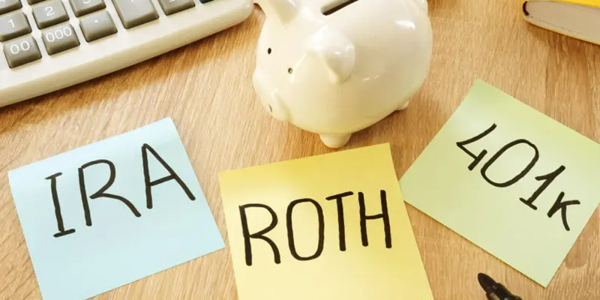When Should You Start Saving For Retirement
Author: Tooba
Have you ever wondered when is the right time to start saving for retirement? Many assume they have plenty of time, while others worry they're too late. The truth is, when it comes to retirement savings, time is your best friend. The earlier you start, the easier it is to build a solid financial future.

But what if you’re already in your 30s, 40s, or even 50s without much saved? Don’t worry—there are still ways to catch up. Whether you're just starting or trying to make up for lost time, this guide will help you understand when and how to start saving for retirement.
The Best Time To Start? As Soon As Possible
The simple answer: Yesterday was the best time to start retirement savings. The second-best time? Today.
Why is starting early so important? The answer lies in compound interest—the process of earning interest on your money. The longer your money is invested, the more it grows.
Think of it like planting a tree. If you plant a tiny sapling early, it has time to grow into a strong, towering tree. But if you wait until later in life, you'll need to plant a much bigger tree to get the same results.
Let’s look at an example:
Starting At 25
If you invest just $200 a month with an average 7% return, you'll have over $500,000 by age 65.
Starting At 35
If you start saving the same $200 at 35, you’ll only end up with about $250,000—half as much!
Starting At 45
Waiting until 45 reduces your total to just $120,000.
The earlier you start, the less effort you need to put in later. But if you haven’t started yet, don’t panic. Let’s break down what you can do at different life stages.
Saving For Retirement In Your 20s: The Perfect Time To Start
Your 20s are an ideal time to save, even if you don't earn much yet. The biggest advantage? Time. Even small amounts can turn into large sums later.
What You Should Do:
Start Small, But Start Now
Even $50 or $100 a month can make a big difference.
Take Advantage Of Employer 401(K) Matching
If your job offers a match, contribute enough to get the full amount—it’s free money!
Open A Roth IRA
Since you're likely in a lower tax bracket now, a Roth IRA allows you to withdraw money tax-free in retirement.
Avoid Lifestyle Inflation
As you start making more money, increase your savings rate instead of spending more.
Example
If you save just $100 a month starting at age 22 with a 7% annual return, by 65, you’ll have nearly $380,000—all from small contributions!
Saving For Retirement In Your 30s: Time To Get Serious
Your 30s can be tricky—maybe you're buying a house, paying off student loans, or starting a family. But retirement savings should still be a priority.
What You Should Do:
Increase Your Savings Rate
Try to put away at least 15% of your income for retirement.
Balance Your Priorities
While paying off debt is important, don’t stop saving for retirement entirely.
Diversify Your Investments
Ensure your portfolio includes a mix of stocks and bonds that match your risk tolerance.
Resist Lifestyle Creep
If you get a raise, consider increasing your retirement contributions instead of upgrading your lifestyle.
Example
If you start saving $500 a month at age 30, with a 7% return, you’ll have about $760,000 by age 65.
Saving For Retirement In Your 40s: Catch-Up Mode
If you haven’t saved much by your 40s, it’s time to take action. Retirement is getting closer, but you still have time to build a solid nest egg.
What You Should Do:
Max Out Your Contributions
The IRS allows you to contribute more to your 401(k) and IRA after age 50—use these “catch-up” contributions to your advantage.
Increase Your Income
Consider side gigs or freelancing to boost your savings.
Cut Back On Unnecessary Expenses
Redirect money from entertainment, subscriptions, or luxury purchases into your retirement fund.
Check Your Investments
Ensure you're still taking enough risk to see growth but not so much that you could lose a lot before retirement.
Example
If you start saving $1,000 a month at age 45, you could still build a $480,000 retirement fund by 65.
Saving For Retirement In Your 50s And 60s: The Final Push
If you’re in your 50s or 60s and feel behind, don’t panic. There are still ways to strengthen your financial future.
What You Should Do:
Take Advantage Of Catch-Up Contributions
If you're over 50, you can contribute $7,500 to a 401(k) and $1,000 more to an IRA yearly.

Delay Retirement If Possible
The longer you work, the more time you save and the fewer years you'll need to stretch your money.
Consider Downsizing
Selling a large home and moving to a smaller one could free up extra cash for your retirement fund.
Explore Part-Time Work
Even a tiny part-time income can help reduce the amount you need to withdraw from savings.
Example
If you save $2,000 a month from age 50 to 65, you could still build a $520,000 nest egg.
Common Retirement Savings Mistakes To Avoid
No matter when you start, here are some common pitfalls to watch out for:
Relying Too Much On Social Security
It won't be enough to cover all your expenses.
Not Adjusting Your Investments Over Time
Younger investors should take more risks, but as you approach retirement, shift toward safer investments.
Cashing Out Retirement Savings Early
Withdrawing funds before retirement triggers penalties and taxes and reduces future growth.
Ignoring Inflation
Prices will rise over time, so ensure your savings can keep up.
How Much Should You Save For Retirement?
A good rule of thumb is the 25x rule—save at least 25 times your expected annual retirement expenses.
For example, if you think you'll need $40,000 annually in retirement, aim for a savings target of $1 million.
Quick Check
Multiply your annual expenses by 25 to estimate how much you'll need for retirement.
The Bottom Line
When should you start saving for retirement? As soon as possible. The earlier you start, the less effort you need to put in later. But even if you’re starting late, there are always steps you can take to improve your financial future.
No matter your age, the best thing you can do is start today. Your future self will thank you.





